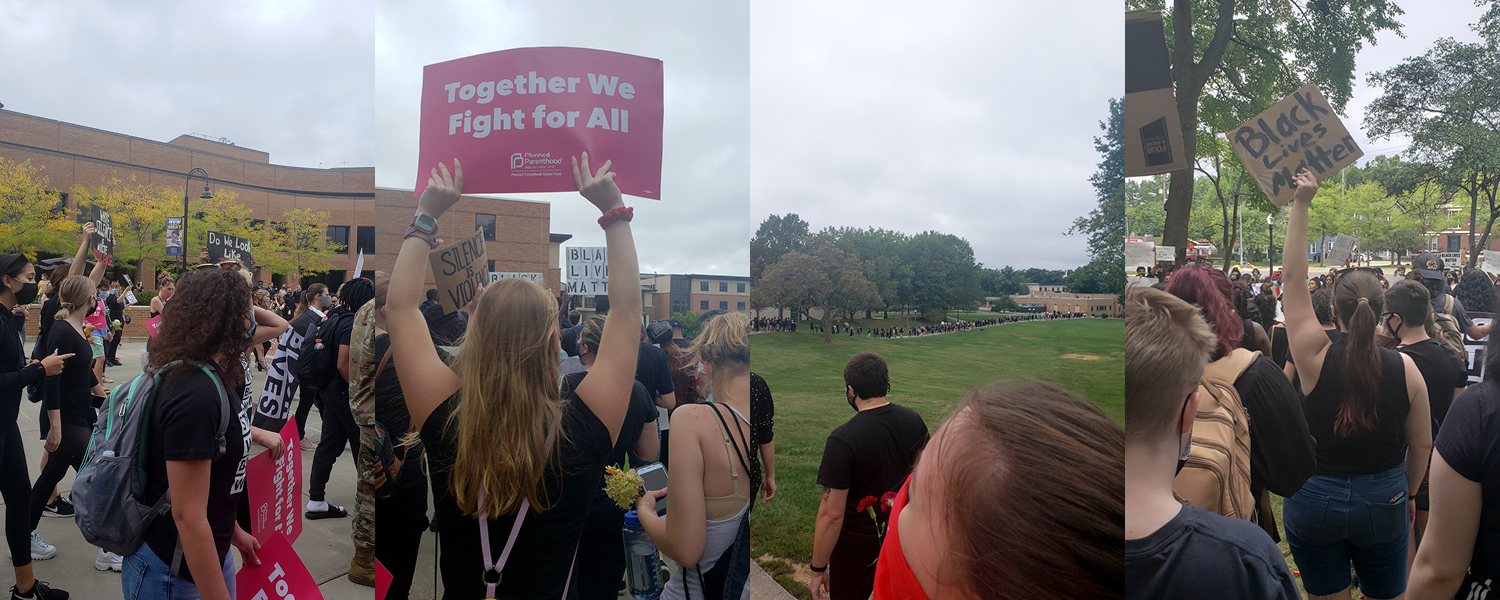Students are passionate. Pair that with ┬ķČ╣Š½čĪŌĆÖs rich history in activism and some amazing things can happen.
With a multicultural campus where respect should be the foundation of all interactions and diversity is respected, ┬ķČ╣Š½čĪaims to foster an inclusive community that makes students feel appreciated and supported even ŌĆō and especially ŌĆō when engaged in activism. But what are the best practices for students and student groups?

┬ķČ╣Š½čĪToday reached out to Ben Davis, Ph.D., director of the Kent Student Center and Kent StateŌĆÖs Center for Student Involvement, to get some answers.
Davis emphasized the universityŌĆÖs commitment to free expression, but there are some rules students and their groups need to adhere to that will keep them in compliance with university protocols.
Davis recommends that students visit the Center for Student Involvement when preparing for a student-led demonstration. The center can advise them on understanding the policies that are in place and the spaces available to them.
ŌĆ£DonŌĆÖt be anxious about coming and talking to us. Sometimes thereŌĆÖs probably a feeling that we will try to suppress your protest. And I want people to know that itŌĆÖs the exact opposite,ŌĆØ Davis said.
The Center for Student Involvement also can help students map out the safest routes when marching on campus, as well as assist in making arrangements with ┬ķČ╣Š½čĪPolice to ensure the safety of everyone involved.
ŌĆ£We want to make sure that they come out with the best way to express themselves and their opinions and advocate in the most efficient way possible,ŌĆØ he said. ŌĆ£WeŌĆÖre here to support you, regardless of what youŌĆÖre trying to say. WeŌĆÖre here. WeŌĆÖre content neutral.ŌĆØ
When organizing a protest, Davis recommends that students begin planning as soon as possible. This ensures that students have time to reserve a space through the center and can make plans with the university, which usually takes around two weeks.
In order to reserve a space through the Kent Student Center, students must be a part of a registered student organization. However, students who are not should not feel discouraged but should meet with the Center for Student Involvement to discuss ways to make it happen.
Davis said he understands that students wanting to plan demonstrations might not have weeks in advance to prepare.
ŌĆ£Protest is a response to something that is happening in the world,ŌĆØ he said. ŌĆ£We understand, in that case, we would say just ŌĆścall us, come in,ŌĆÖ IŌĆÖll break up my schedule however it needs to be to make sure that I'm meeting with those students.ŌĆØ
He also worked with Kent StateŌĆÖs to create an . The kit provides students with the resources they need to advocate for the issues they want to see changed at the university level. It also contains a breakdown of the university policy regarding demonstrations, marches and speakers.
Davis expressed his love for aiding students on the Kent Campus in their expression.
ŌĆ£IŌĆÖm proud to be a part of this community that isnŌĆÖt afraid to organize and say how they feel. I think itŌĆÖs a really awesome part of being a part of the Golden Flash community,ŌĆØ Davis said.
Learn more about the ┬ķČ╣Š½čĪCenter for Student Involvement.

